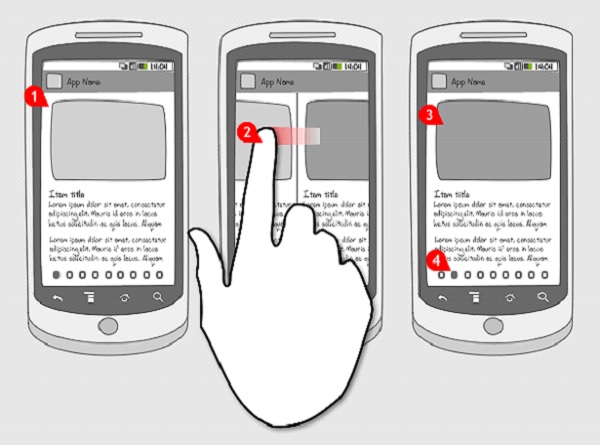Website design and development is a profitable business. It is increasing by leaps and bounds with each passing day. Every website designer tries to create unique websites/webpages and meet the swift growing needs of their clients/customers. In spite of the presence of creativity, open thinking, and sincere efforts, there are some myths that hinder their progress in the website design field.
As a matter of fact, Web design has developed a lot. But, despite all changes, the basic needs of users have remained the same in all these years.
Here are the top 10 myths about web design that every web developer should avoid:
1. Superfluous Website Design Will Help You Attract More Customers
There are a good number of web developers who believe that superfluous website design helps entrepreneurs to make their site totally different from their competitors and attract a large number of visitors. This notion is totally baseless and untrue.
Now, the world of web design is ruled by minimalism. Every design element that does not serve the purpose of customer’s convenience must be removed ASAP, such as Animation, flash, etc. Just keep the website design as simple as you can because the main purpose of web design is to help visitors get the desired information easily on the web.
2. Multiple Page Scrolling Feature Boosts the Customer Engagement

Today’s modern and knowledgeable internet users want every instantly and quickly. They will not a long article in search of a small amount of information. Always keep in mind that there are many websites on the internet which offer the same information in a concise form. So, there is no need to force visitors to scroll different web pages just to read a single content. Visitors don’t want to spend time on a complex website.
So, ask the content writer to keep the article concise and informative. It will help you to make your website visually pleasing and content will be easily readable. Restrict the use of scrolling option as far as possible.
3. Visitors & Search Engines Have Nothing to Do with URLs
In simple terms, a URL is the web address of a live website/web page. Search engines and users, both like clean URLs and dislike unoptimized URLs. Even today, there are many web developers who believe that visitors and search engines have nothing to with URLs. It is a totally wrong perception that must be eliminated ASAP.
Google avoids unoptimized URLs when it has to display results. In the same way, visitors consider messy URLs as SPAM web pages and avoid visiting them. Sometimes, the user’s browser does not allow him/her to navigate such websites or webpages.
So, it is the responsibility of the web designer to edit URLs, make them simple and inconvenient for search engines and visitors. Always keep in mind that URL links reflect the content of those pages. So, they must be optimised in such a way that users can easily understand them.
4. Lack of Colour Identification of Content Links Doesn’t Matter
External and internal linking is an important factor in website optimisation efforts. It helps a website to get more exposure on the web, attract new users, and give business opportunities to website owners.
However, all your External and internal linking strategies are doomed to fail with no considerable returns if you ignore the predefined concept of colour links. Web designers must use colours to highlight links attached to a content. Generally, the blue colour is used for links that the user has not yet visited. On the other hand, red or purple is used for links that have already been visited by the audience.
5. Website Navigation Doesn’t Matter A Lot
Whenever you visit a new place, it is difficult to find the right way. You need some guidance in order to find the way that leads to your destination because you are not acquainted with that new place. Therefore, it is always convenient to find the right way with the help of Google navigation service. The same thing takes when you visit new sites.
Therefore, web designers need to implement the intuitive navigation path on websites so that visitors can easily use the site without feeling any problem. So, keep your website design structure in a correct form and make it easier for visitors to find the information on your website. Attach a search on the home page of your website. Add a proper sitemap to the site containing all important links of your website. This makes it easier for search engines to easily crawl and index your website.
6. Inframe Makes Your Website Appealing!
It’s a baseless myth that you must give up as soon as possible. In fact, Iframe would break the site and confuse users when they visit your website for the first time. So, users develop a negative perception about your website and don’t visit it from the next day.
On the other hand, the excessive use of Iframe affects the quality of printouts, prohibit the use of bookmarks on the page, restrict the user to return back, and URL doesn’t work as expected. So, avoid using it as far as possible.
7. Websites Doesn’t Need Renovation
Several web developers always boast of their web design abilities and they proudly say that websites designed by them don’t need a makeover. This proves wrong when a website is operated with a business point of view and users expect something new from site operators. So, in order to keep the existing visitors interested in your brand and attract new ones, renovate your website from time-to-time.
8. Opening A Site in A New Window Is Always Helpful
There was a time when web designers preferred creating websites in such a way that every page of the site used to open in a new window. This feature allows you to increase the number of page views on your website, but also annoys the user because the opening of the site in a new window takes too much time. So, web designers must avoid using this feature as far as possible.
9. A Long Response from The Server Is Normal
Modern Internet users want everything in the least possible time and they don’t have time to wait for websites/web pages to load on their devices. If your website is slow, most visitors will prefer to leave it. It happens because of the long response time is taken by the site server. So, take all possible steps to make your website faster.
10. Feedback & Client’s Testimonials Doesn’t Matter A Lot
If you have such thoughts, throw it out of your mind ASAP. Feedback and client’s testimonials work as a catalyst to your web-based business and help you to attract more business deals. So, create websites/webpages in such a way that visitors can easily give feedback against your products/services. You can use the customer feedback to make further improvement in your website/products/services and expand your business easily in all directions.
Final Words
No web designer wants to create websites with a deliberately unsuccessful design. So, they must get rid of website design myths as soon as possible to hone their site design skills to help their clients to easily excel in the web-based business with a feature-rich and professional website.

